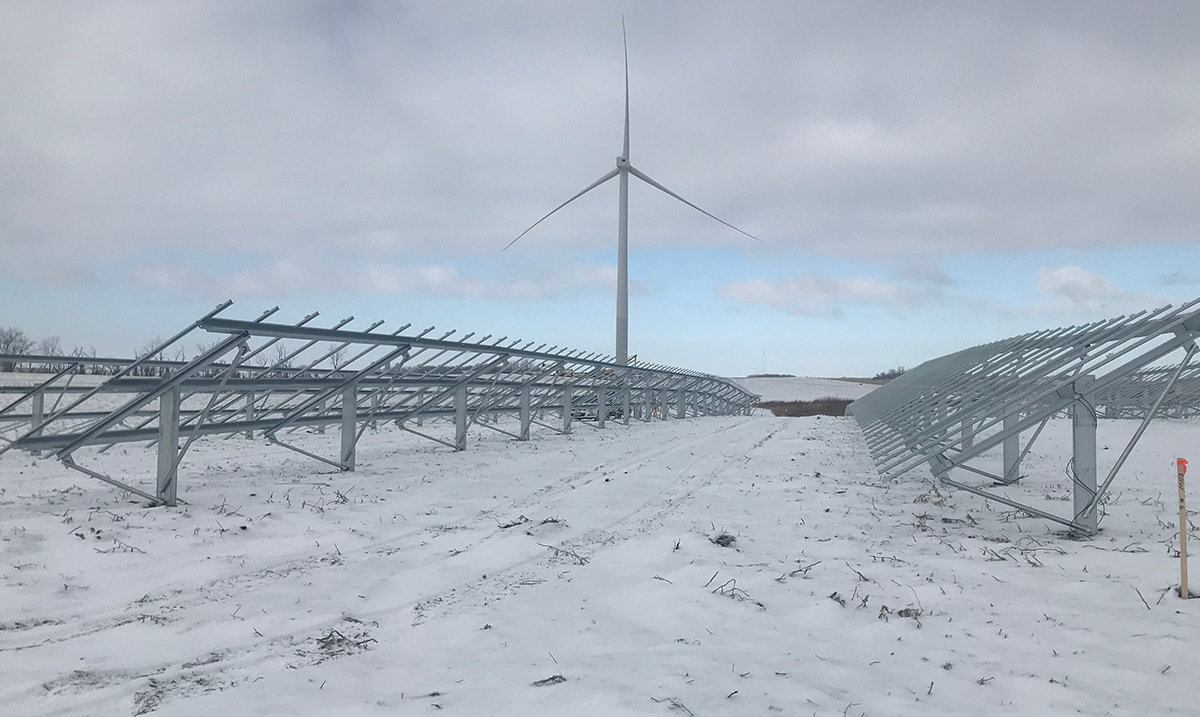The proposed change by the Federal Emergency Management Agency to the 2024 International Building Code, S76-22, would require solar, storage and wind projects to meet Risk Category 4 requirements, the most stringent category possible.
A total of 318 leading clean energy companies are calling on International Code Council (ICC) voters to reject a code proposal from FEMA that will upend U.S. clean energy progress, and instead, approve a set of compromise solutions. Read the text of the letter here.
“The stated goal of FEMA’s proposal is increased grid reliability, but when you needlessly make it harder to build resilient clean energy, the obvious effect is a reduction in reliability,” said Abigail Ross Hopper, president and CEO of the Solar Energy Industries Association (SEIA). “This overreach is being made in an opaque process without input from experts on economic impacts, electric reliability and climate change. America’s solar and storage industry is urging International Code Council voters to consider the real-world impact of this code and approve SEIA’s compromise proposals.”
The compromise framework (S79-22 and S81-22) includes an important carve-out for solar projects to be designated as Risk Category 2. According to SEIA, it balances a significant increase in the structural requirements for solar facilities with enough breathing room for project construction to move forward. FEMA officials themselves confirmed they support the proposals put forward by SEIA and supported by the Distributed Wind Energy Association (DWEA), according to oral testimony on Sept. 15 and a voter’s guide that FEMA mailed out to voters on Oct. 13.
The FEMA proposal would require clean energy projects to be built to withstand damaging natural disasters far beyond what is needed. Most solar projects today are ranked risk category 1, and this proposal would bring it to risk category 4, placing a burden of increased costs on project construction. SEIA said this damage to project economics would lead to dozens of gigawatts cancelled clean energy projects solar deployment, according to SEIA, thereby accomplishing the opposite of FEMA’s S76-22 proposal.
A few of the potential negative outcomes from the proposal include:
- Higher embedded carbon and supply chain issues due to increased demand for steel and concrete to reinforce impacted equipment
- Jeopardizing Renewable Portfolio Standards and other decarbonization goals
- Thwarted efforts to establish a clean energy economy to counteract the causes of climate change
“The FEMA proposal is well intended, but not well considered,” said Mike Bergey, president of DWEA. “It’s like saying that the cars for VIP’s should be bulletproof and then requiring all cars to be bulletproof. Besides that, FEMA totally misses that the grid is the weakest link and requiring more steel and concrete on solar and wind installations won’t strengthen the power grid.”
The voting period for ICC members runs from Oct. 17 through Nov. 1.
SEIA provides more details here.
This content is protected by copyright and may not be reused. If you want to cooperate with us and would like to reuse some of our content, please contact: editors@pv-magazine.com.









It was very informative and I appreciate you sharing it with us.